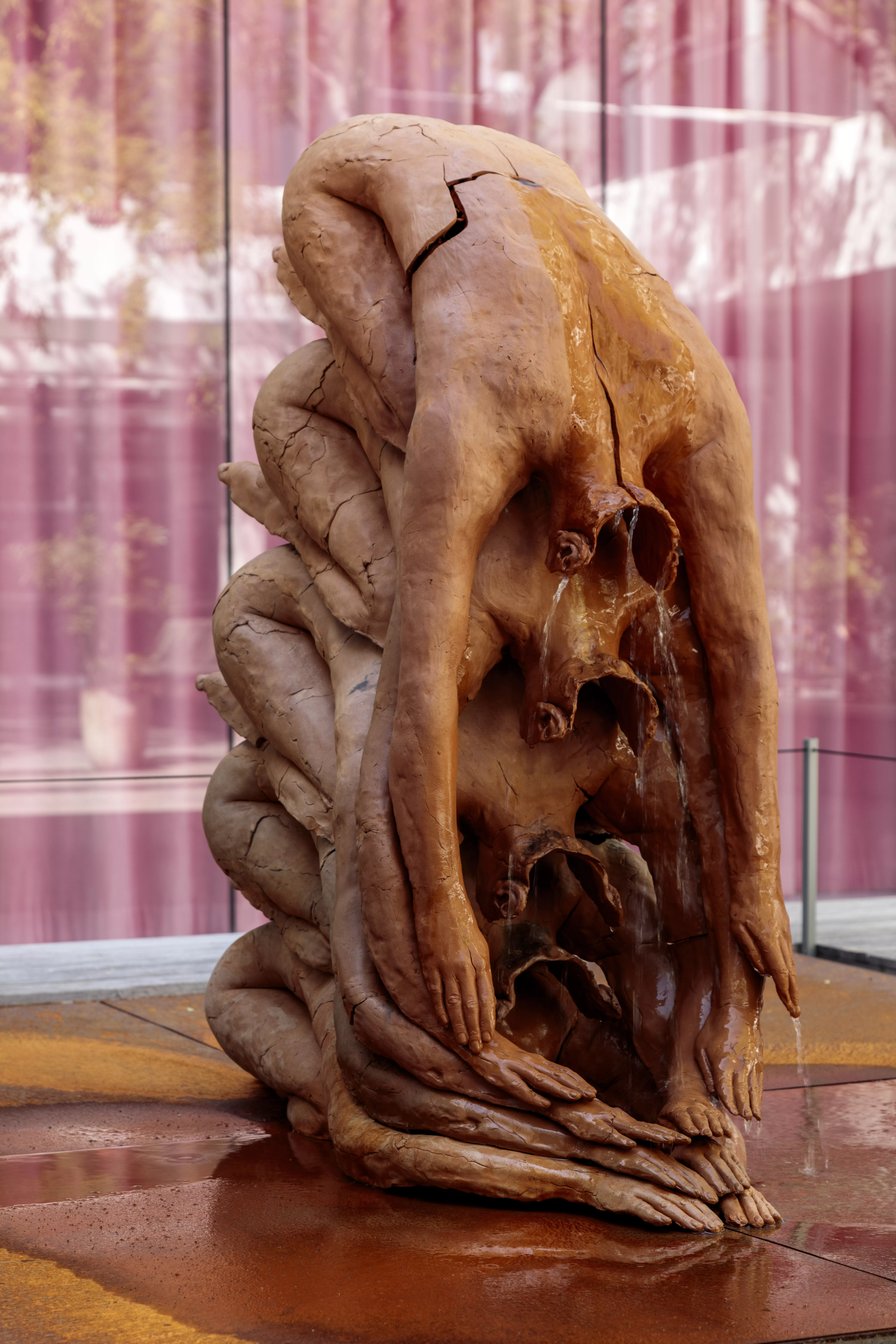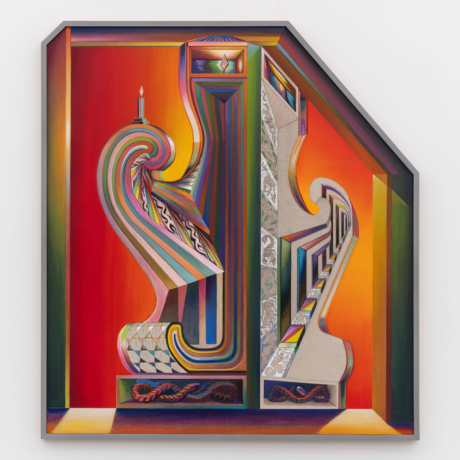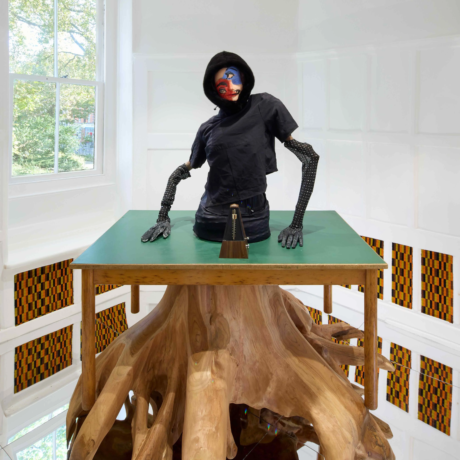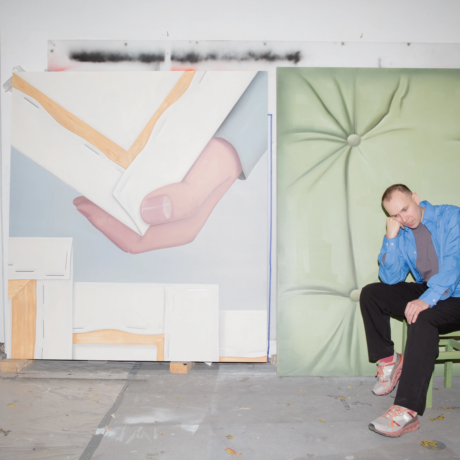
James Baldwin began his speech “A Talk to Teachers,” written in the midst of the American Civil Rights movement, with a chillingly earnest sentence: Let’s begin by saying that we are living through a very dangerous time. This is clearly the case now. Perhaps, depressingly, this has always been the case. It’s one of the most sacred challenges of the artist to respond to this reality accordingly.
Across the globe windows are coughing up smoke. Metaphorically, and terrifyingly for far too many, literally. It appears that the western promises of techno-modernity only accentuated the violent underbelly of the soul that birthed them. Even from within the typhoon of history, this much is clear.
In the barbarisms and bombs of the 21st century one can make out the multiplying echoes of the horrors of modernity, and by extension, history itself. During her time, the poet Mary Oliver attempted to respond to such historical violence through her chosen medium in the 1986 poem “Every Morning”, describing
how the morning itself appears
like a slow white rose
while the figures climb over the bubbled thresholds,
move among the smashed cars, the streets
where the clanging ambulances won’t
stop all day–death and death, messy death–
death as history, death as a habit
To be in genuine, cognitive recognition with the constancy of this suffering and one’s relationship to it is a challenging, painful responsibility. It is a process of constant mourning, one that puts into question our structures of collective memory and memorialization in the 21st century. Resultantly, amidst the corporatization of the art-world, it’s rare to find art that tackles this challenge without fetishistic nostalgia and with a cerebral openness. Roksana Pirouzmand’s art practice does, and in this way, it is a gift.
An Iranian multi-modal artist based in Los Angeles, Pirouzmand’s work draws from her personal and familial experience of historical violence in Iran and the dysphoric nature of multi-continental existence. Her practice utilizes a carousel of mediums: painting, ceramic work, sculpture, print-making, and performance art. Yet it all feels like a part of a broader tapestry of sacred inquiry. Through its internal iconography of faceless body-forms it communicates in a universal language, speaking to the violence we have inherited from modernity, and by extension, history at large. This is not to say that it is purely born of grief and horror, however. There is also a tender sacrality to her work, one that identifies the beauty of living in the midst of collective survivorship. It conjures a serenely meditative hugh despite emerging from the cyclone of madness that we are faced with, freezing the abyss of the present in order to reveal the beauty of its eternity. In this way, it feels messianic.
Imagistically, Pirouzmand’s work revolves around the body in a way I haven’t encountered before, paving a precise middle path between the grotesque and the reverential. She has mapped out what is akin to a cosmology through often tethered or communing bodies and body parts: bodies that appear to be praying, bodies that appear to be dead, resting bodies, hiding bodies, scattered limbs, limbs in the midst of movement, beautiful limbs, even limbs with a history. (The artist has employed casts of her grandmother and mother’s bodies for a piece.) Her work in this way is a deeply personal process of memory and memorialization that reaches beyond itself, one that feels pertinent in a time haunted by an excess of mourning.
In light of her show at the Armory alongside Haena Yoo with Murmurs Gallery, an upcoming performance in Mexico City at the Vernacular Institute on September 18th, and an anticipated show at and Frieze London alongside Karla Ekaterine Canseco also with Murmurs Gallery, I sat down with the artist to discuss her multimodal process and her practice at-large.

TM: My first inquiry has to do with the “wall works” in your most recent show. Because your practice is so multi-modal and often sculptural, I’m curious what your process of image cultivation is like when you’re painting, and how that may play into the way you think of images for your other kinds of pieces in general.
RP: The process of creating “wall works” is more immediate compared to creating sculptures. Sculpture work, labor wise, takes a longer time to transition from a sketch to an object. Therefore “wall works” in a way become a place of expressing and sketching one step prior to making the sculptures. “Wall works” are thus psychological spaces. In the most recent series “wall works,” the bodies are placed in an in-between zone, in both a landscape and an interior space. I wanted to cultivate this surreal space, something that can feel like a bedroom but also a mountainous landscape. The bodies are stacked or sitting on top of each other, holding another’s head, etc. There’s this care and violence that exists at the same time.
TM: One of my favorite parts of your practice is the way you’ve created this organic iconography of body-forms. Throughout your pieces bodies appear in similar poses, spaces, and situations of relation, no matter the medium. They compose a kind of universe. So in the case of the “wall works,” are those, and by extension your sketches, a primordial site of your creation? Are the sculptures for example starting as sketches or drawings as well, or is there an entirely different process of image cultivation for your sculptural work?

TM: Incredible. I know that you work with water a lot in your practice, at least you have a lot in the past, maybe not as much recently it seems. But I think that your relationship to the materials you work with and the way in which they serve as these active allegories for memory, especially in regards to ceramics, is really interesting. I think that “seeping” is a gorgeous word, and very apt to describe what you do in relation to water. Could you speak about all of this a bit more?
RP: I use water as a way to produce a slow erosion in my work. I use it as this solidless thing that can slowly wear away something. In its pure form it’s transparent, but when it comes in contact with clay, dissolving it, becomes muddy and obscures things. I used this quality of water to my advantage in a few of my works such as “until all is dissolved” and “past seeps through the present”. Sometimes I’m not even using water physically. For example, it subtly appears in the title of my latest series of “wall works,” “like a pebble in a riverbed”. I’m thinking about water in it: the flow of the water in contradiction with the stillness of the rock. I see those bodies like a rock and the things happening around them like water eroding and washing them away.
TM: I’m getting a bit off-topic with this next question, but here we go. This harks back to what you mentioned earlier seeing your grandmother’s history of labor in her feet. I know for you, one general characteristic of your work is that you aren’t — or maybe you are in the sense you’re interested in its lack —interested in the face. The face isn’t very present in a lot of what you do, which appears to me to be very intentional. There seems to be a reverence for the limb in your practice that I don’t see often. I think this is very interesting, especially because I sense in your work a relationship to historical violence that is very strong yet not boisterous, and so much of that comes from the bodies in your work. This is dark, but in images of historical violence and atrocity you often don’t see people’s faces, you see their bodies. I’m curious why you feel like you may be gravitating towards the faceless body and the rest of the body.
RP: Definitely. I’m often using family images, people who I know, the bodies I know. But I’m also thinking of this practice as a symbol for a bigger picture, a history: this generational thing that everyone can relate to. When a face is obscured it could be anybody. I’m taking away the specificity of their being and bringing the body into the vagueness of what it could be. A grandmother’s hand is similar to any other grandmother’s hand. So in the paintings when I’m cutting out the faces, they could all be any-body or even one body. I’m taking away the specificity of the person.
TM: That makes total sense. There’s a universality in your work that comes from that. I know that you often use what look like to me as photographic family portraits in your pieces, such as in your piece “on my mother’s lap,” but even in your use of portraiture it looks as if the face is covered by something. Could you talk more about the use of historical and personal photography in your work?

RP: In “on my mother’s lap” and generally in the show I had at Murmurs Gallery in L.A. I was juxtaposing sculpture with portraiture. So many people have similar images. Especially in the era I was taking images from, the poses are very homogenized and recognizable. So I’m using the family image, but they stand for something larger: a shared memory.
TM: And what are the droplets that seem to be covering the faces in the photos?
RP: They are glazelets, glazes that are fired to a higher temperature than what it can withstand. I fire them vertically and by passing the temperature they’re supposed to be, they melt, and with the help of the gravity they ooze out of the clay and turn into tear-like shapes.
TM: There’s a relationship between memory and melting there as well which is really striking. I love the way you meld all of these mediums together, and I’ve noticed how recently you’ve been experimenting with more mechanized processes, such as in your recent sculptural piece “A Tap, A word,” where you mechanized the hands. Are you aiming to experiment with this type of motorized work going forward?
RP: I always think about movement. So the motor comes as a natural extension of that. In a way it’s doing a performance for me, it opens up a doorway to something that is physically impossible. I don’t have that many hands to complete the gesture. I guess you could say I’m doing a kind of surreal performance in a way.

TM: It’s really interesting how it seems you’re coming to a synthesis with your practice in regards to medium. Could you tell me a bit about your upcoming performance in Mexico City? I’m curious how it’s a development of everything we’ve talked about, and particularly a development of your “in tandem” performance piece, which you showed at Spurs Gallery recently.
RP: There are few elements that I know will exist. I know that I’m going to be working with my own body. There will be movement but not initiated from the body. I’m interested in experimenting with moving objects around the body as opposed to the body moving objects. A kind of reverse puppeteering. So the idea I have right now is that I’ll be wearing clothing that’s connected to a motor that is moving the clothing to the left and right. So I’m getting pushed and pulled in two directions. That’s the image I have in my head. The space is also a home-space, there’s multiple rooms, so I’m thinking of creating a nonlinear narrative between three images/installations. I also want to incorporate a light or fire element into the work. That image came from a Shakespear poem that first I was introduced to by a Farhad Mehrad song called “Khayal-e-Khushi” which asks the question: “who can hold a fire in his hand by thinking on the frosty Caucasus?” In short, I’m thinking about experimenting with new materials and pushing my use of old materials forward, creating new vocabularies. I hope for that to evoke something in the audience.
Words by Theo Meranze





